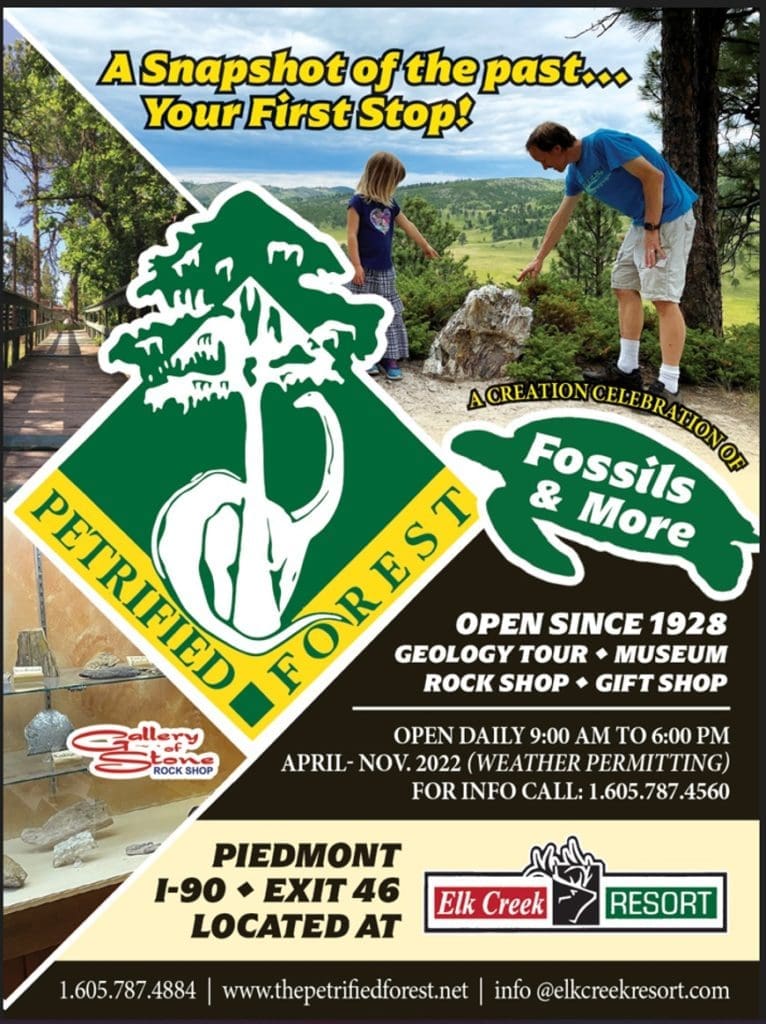About Us
Petrified Forest Tour Rates
-
Seniors 60 & up $10
-
Adults 13 to 60 $12
-
Children 4 to 12 $8
-
3 & under FREE
What is petrified wood?
Petra (pet’ra): stone
Petrify (pet’ra fi): to change to stone
Petrified wood is the fossil that remains of living trees found in this exact location of the Black Hills of South Dakota. The wood becomes transformed from living tissue to rock through mineral replacement that takes effect after the tree has fallen and been buried by sediments in a swamp environment for several years. The sediment mineral replaced the soft-tissue minerals of the tree, therefore transforming into rock. The cellular structure remains intact, keeping the now formed rock in its original tree shape. This replacement process can be quite exact as you will see wood grains and growth rings in the specimens on the trail ahead, and many colors of minerals within the Petrified trees.
There are several theories about what caused the mountains, petrification, rock layers, and the geology of the Black Hills.
1. Creation:
God created the world, but because of the great sinfulness of man, He caused a great flood to come upon the earth, destroying all of mankind, except for eight people, and much of animal life. This explanation accounts for all of the fossils that have been laid down all over the earth, as the process of fossilization is exactly what you would expect with water covering the entire earth. Also, the volcanic activity happening underground would push the waters in such a way as to cause the layering of rock that we see in abundance, as well as creating mountains by the force of the rushing water. Most of the fossils we see are pretty much exactly as present day animals, pointing to a much younger earth than posited by evolutionists. There are several present day examples of quick petrification (eg, the Church de Salut in Venice, Italy) that belie the need for periods of time longer than 100s of years, or even just decades. The trees that we find petrified here in South Dakota were uprooted elsewhere, or just broken off at the root, and whole forests deposited here as the floodwaters receded.
2. Evolution Theory:
During the early Cretaceous Period, the entire North American continent was located much farther south. The area, now called South Dakota, was a few degrees to the south of our present latitude and was much closer to sea level. Also, at that time, there were no Rocky Mountains. The combined effects of these geographical differences resulted in an entirely different climate and air mass circulation patterns. During the Cretaceous Period, what is now South Dakota experienced higher average temperatures and greater precipitation than occur here today. Over the great expanse of geologic time, the North American plate acted as a huge barge, carrying the fallen trees that were buried under sediments. As the land mass gradually moved north and west, petrifaction of the trees occurred.
How does wood petrify? What about Carbon-14 dating? Doesn’t petrification take millions of years?
